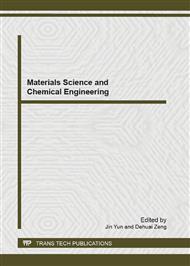p.817
p.822
p.829
p.835
p.841
p.846
p.851
p.859
p.864
Study on Extraction Efficiency of Coal with Different Methods
Abstract:
To raise the extraction efficiency of the organic components of coal, samples were selected from tectonic coal and original bituminous coal in symbiotic seam of coal in Pingdingshan 8th coal mine and 5th coal mine. For comparing the extraction time required under the same extraction rate, two different extraction methods, ultrasonic-microwave coordination extraction and traditional soxhlet extraction, was adopted. The experimental results showed that the extraction proportion of ultrasonic-microwave coordination extraction was 10.7911% when adopted tectonic coal of 8th coal mine as sample, selected 80mL pyridine as solvent, set 95W as microwave power and 3min as extraction time. Under the condition of same extraction proportion, soxhlet extraction time is 39.43h.So the extraction efficiency of the ultrasonic-microwave coordination extraction was as 788.6 times as soxhlet extraction. The ultrasonic-microwave coordination extraction was a simplify method with fast extraction speed, large volume sample, energy saving and environmental friendly.
Info:
Periodical:
Pages:
841-845
Citation:
Online since:
May 2013
Authors:
Price:
Сopyright:
© 2013 Trans Tech Publications Ltd. All Rights Reserved
Share:
Citation:


